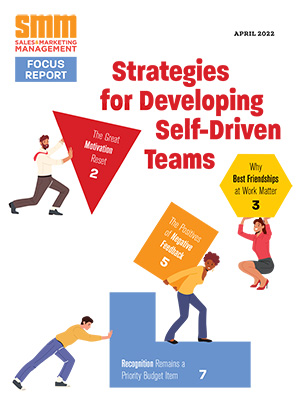 As a generic term, “solution selling” is perhaps more broadly recognized than any other among the dozens of sales approaches available today. That could be the primary reason why it has been under attack for years.
As a generic term, “solution selling” is perhaps more broadly recognized than any other among the dozens of sales approaches available today. That could be the primary reason why it has been under attack for years.
The distinction between the generic term and the intellectual property Solution Selling® developed, trademarked, owned and distributed by Sales Performance International (SPI) is important because attacks on solution selling, by extension, become attacks on Solution Selling®. (Disclosure: SPI subscribes to ES Research Group’s research.) The goal of this piece is not to defend SPI, nor to support the legitimate positions of those for whom the true Solution Selling® approach isn’t appropriate. It’s to highlight, with a few facts and a bit of personal opinion, why the distinction matters.
Sales experts rarely agree on approaches. Most do agree, however, that whoever gets first access to a customer — before they have recognized their needs — has, at least temporarily, the competitive advantage. Solution Selling® aligns with many other proven methodologies in this: When you engage with a customer that has already assessed their needs, the probability of winning that business is low. The reason is simple — by that point, it’s likely that your competitor has already had an opportunity to influence how the customer uncovered, understood or otherwise formalized their needs. You’re now playing the game with your competitor’s rules.
In “The New Solution Selling” (McGraw Hill, 2004), Ken Eades writes, “Over 90 percent of the (best) potential customers are not looking. Why is this? The answer relates to latent pain. Either through ignorance or rationalization, they’re living with their problems. The enlightening aspect of this simple concept is that the greatest opportunities lie with the people who have problems but who are not actively engaged in looking for a solution.”
“Latent pain” is a foundational pillar of the Solution Selling® methodology. We may disagree about the nomenclature itself, but for our purposes here, the explicit principle of latent pain is about insightfully educating customers on critical business issues that they are not yet aware of or considering — the recognition of needs (“pain,” in Solution Selling® terms) and timing (when in the customer buying cycle that recognition occurs).
I spoke with Robert Kear, SPI’s CMO, for clarification on the timing issue. He said, “Since it’s not always possible to be first, we teach something called ‘vision re-engineering’ to insightfully and honestly challenge a customer’s initial assessment of their needs and potential solutions. Solution Selling® shows how to address both acknowledged and unacknowledged pains, and provides specific tools and models to help sellers elevate customers’ latent needs to an admitted problem worth solving.”
To fully appreciate the relevance of this idea, look to the measure of SPI’s global revenues directly related to the Solution Selling® brand, which have increased by 40 percent, compounded over the past three consecutive years. (This is significantly ahead of many other leading methodology and training providers). Solution Selling® has been successfully adapted and applied to the full spectrum of sales models, from inbound call centers, to quota-carrying inside sales, to complex outside sales scenarios. It’s in place in more than 50 discrete industries, including aggregates, logistics, office supplies, healthcare and insurance, and numerous other “commodity” sectors, with more than 50 percent of deployments outside of the United States. So, while solution selling may be dead, it doesn’t appear that Solution Selling® is.
Solution Selling® isn’t right for everyone. Neither are hundreds of other sales methodologies available out there. But something is. The challenge is always to find the right approach for you.
My advice is this: Start by understanding your company’s selling requirements and then match those against the real capabilities of a variety of providers.


